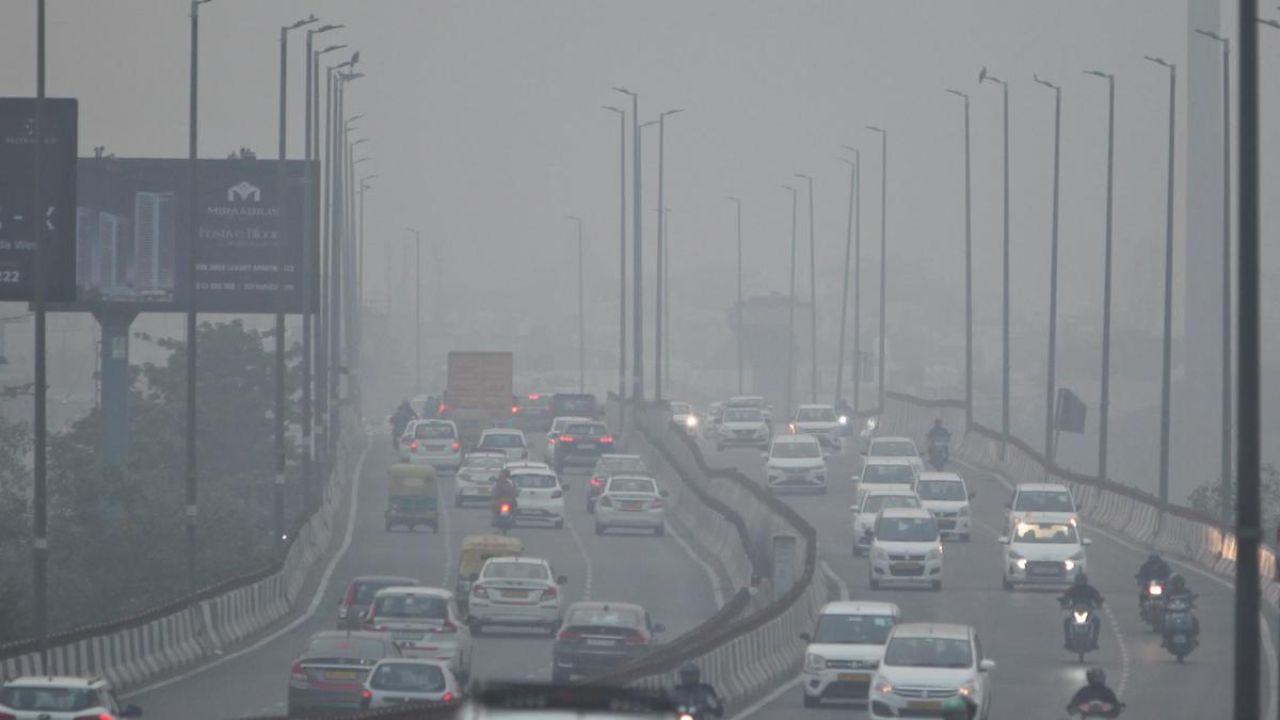 English
English

Delhi’s air quality plunged into the ‘severe’ zone as four areas crossed the 400 mark, blanketing the city in toxic haze. But will an approaching western disturbance and IMD’s forecast of rain finally bring respite to the gasping capital?

Delhi AQI in hazardous category.
New Delhi: The national capital woke up to a hazy Tuesday morning on 4 November with toxic air once again choking the national capital. As per the Central Pollution Control Board (CPCB) data recorded at 9 am, the overall Air Quality Index (AQI) stood at 310, falling under the ‘severe’ category.
The situation worsened in several northern pockets, with Wazirpur, Alipur, Bawana, and Jahangirpuri crossing the dangerous 400 mark, indicating hazardous pollution levels.
The India Meteorological Department (IMD) noted that Delhi-NCR began the day with a mild chill, as the minimum temperature hovered around 19°C. A thin layer of haze blanketed the skyline during early hours but gradually dispersed as the sun rose.
By afternoon, temperatures were expected to touch 30°C, offering brief respite before dipping again to around 24°C at night a sign that early winter is slowly setting in across the region.
Delhi AQI Update: Overall air quality remains ‘poor’, some areas see improvement
A day earlier, on 3 November, Delhi experienced its coldest morning of the season when the minimum temperature dropped to 13.4°C at Aya Nagar, according to IMD data recorded at 8:30 a.m. While the dip in temperature brought temporary relief from the heat, it also coincided with deteriorating air quality as stagnant winds trapped pollutants close to the surface.
Despite cooler weather, the air continued to remain heavily polluted. On Sunday, Delhi’s average AQI was measured at 324 (‘very poor’), with several areas recording alarming figures. Wazirpur (389), Burari Crossing (384), Anand Vihar (371), Ashok Vihar (367), and Aya Nagar (365) remained among the most affected zones. Other severely impacted regions included Mathura Road (345), Chandni Chowk (354), Dwarka Sector-8 (344), and JLN Stadium (331).
Poor AQI is making you sick, a doctor explains the problems toxic air can cause
Health experts have warned that prolonged exposure to such air poses serious risks for children, senior citizens, and individuals with respiratory ailments. The red-zone classification indicates air thick with particulate matter (PM2.5 and PM10), capable of triggering asthma and other pulmonary issues.
In a ray of hope, the IMD has predicted light rainfall across parts of Punjab and Haryana on 4 and 5 November, as a fresh Western Disturbance approaches northwestern India. The system is also expected to cause scattered to heavy rain and snowfall in Jammu, Himachal Pradesh, and Uttarakhand, which may help clear suspended pollutants in Delhi’s atmosphere in the coming days.
If the rain forecast materialises, it could temporarily improve Delhi’s deteriorating air quality and bring some relief from the thick smog that has gripped the region since late October.